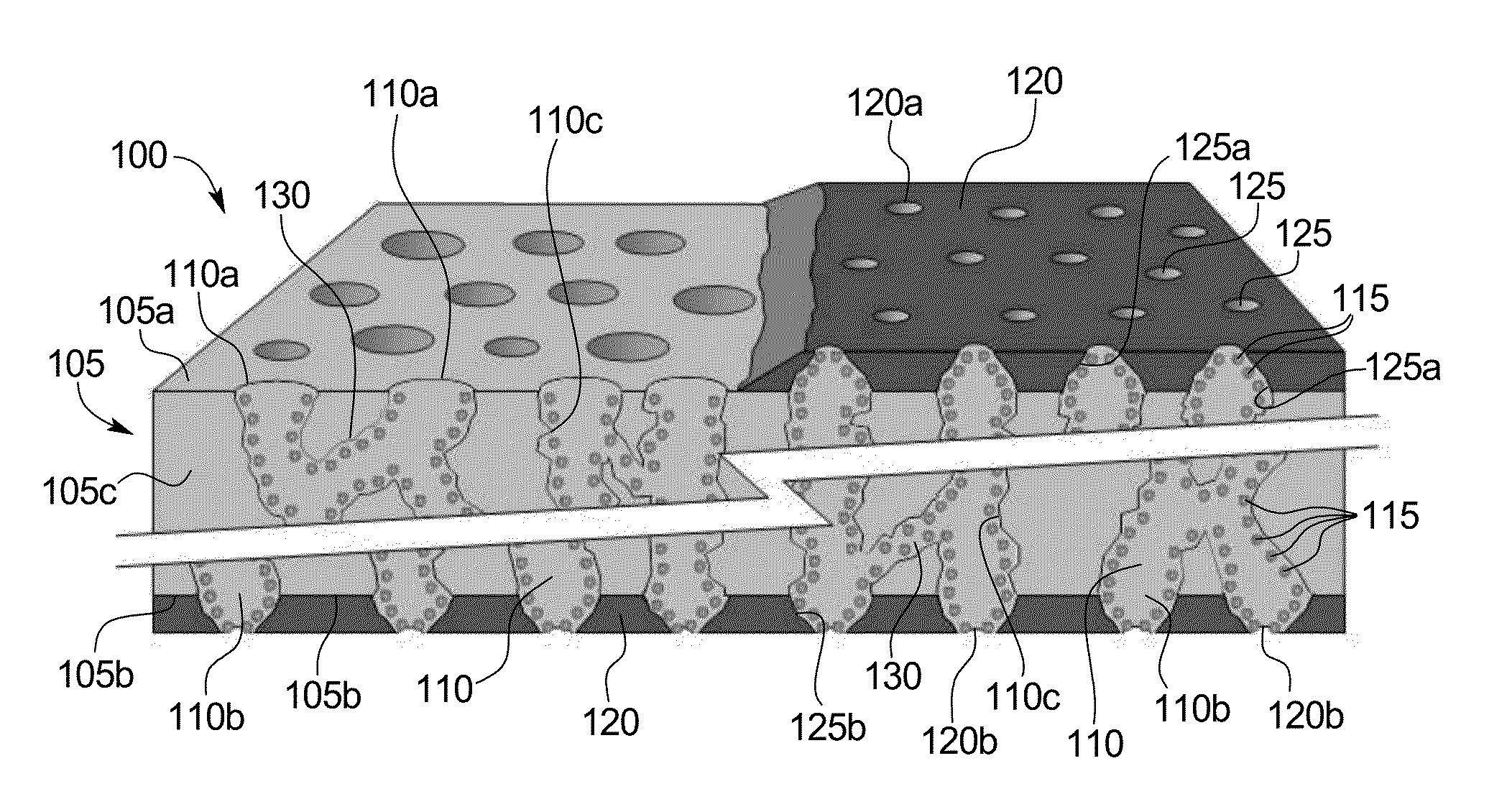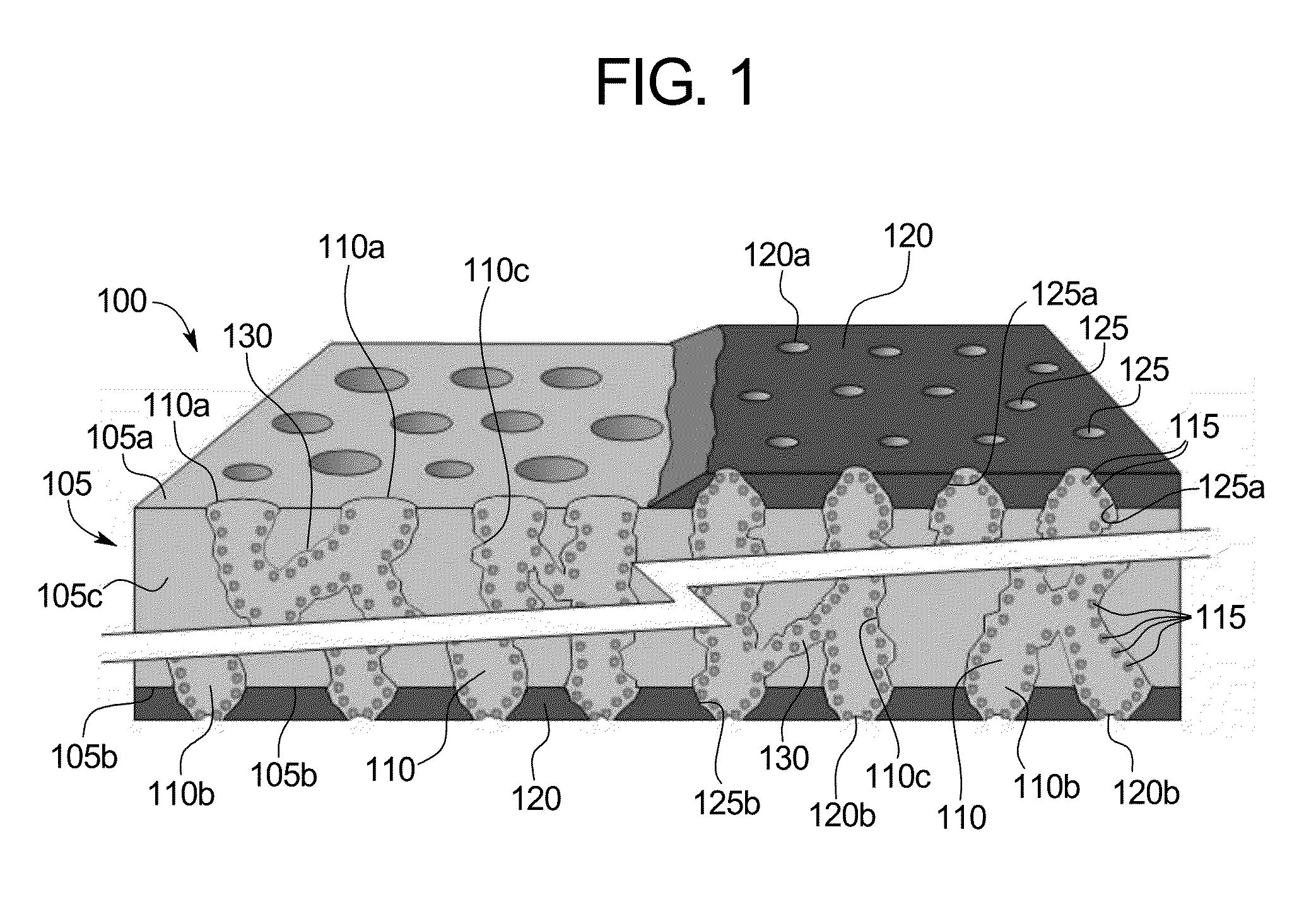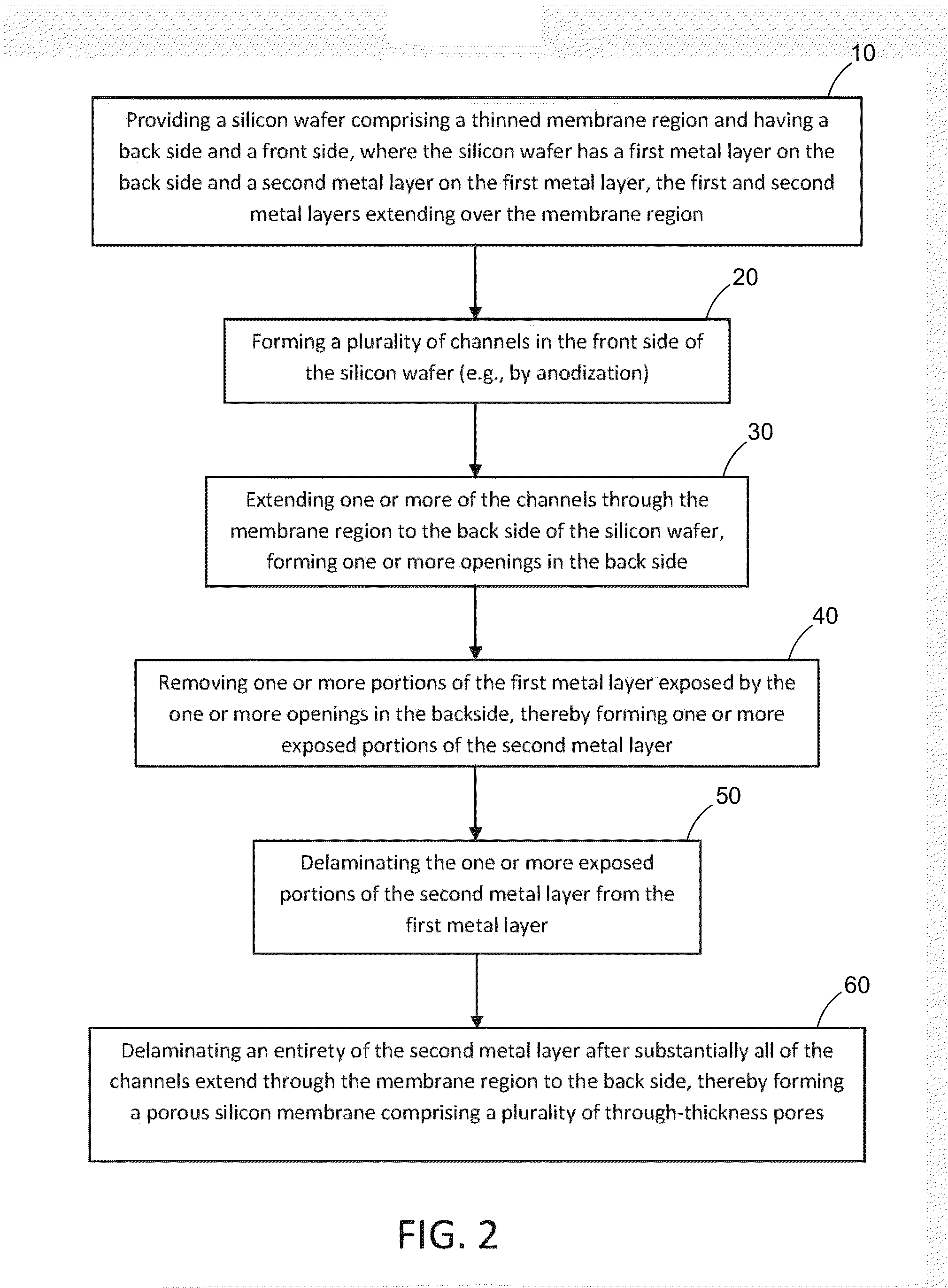Silicon-based proton exchange membrane (PEM) and method of making a silicon-based PEM
- Summary
- Abstract
- Description
- Claims
- Application Information
AI Technical Summary
Benefits of technology
Problems solved by technology
Method used
Image
Examples
example 1
Fabrication of Porous Silicon Membrane
[0035]Fabrication of the silicon membranes may begin with KOH etching of a p-doped silicon wafer. A 0.8 μm thick LPCVD nitride layer is used as a protection mask in KOH solution. First, the nitride layer on the backside of the membrane is patterned and etched using a Freon plasma. The exposed silicon areas are then etched in KOH until a membrane thickness of 24±2 μm is reached. The nitride layer on the frontside of the membrane is subsequently patterned and etched to expose silicon. In membranes with an additional metal layer on the frontside, the patterning step is followed by wet etching of the metal layer and then Freon plasma etching of the nitride layer.
[0036]Prior to anodizing the silicon wafer, metal films may be deposited on the back side by using a magnetron sputtering system at 5×10−2 Torr pressure and 300 W DC power in argon gas. The resulting backside Cr / Au layer may be wired directly to the anode electrode to provide an electrical ...
example 2
Hydroxylation of Pore Walls
[0037]After the anodization process, the membrane may be left in de-ionized (DI) water for a few hours to clean the anodization electrolyte from the pores. As the Fourier Transfer Infrared (FTIR) spectra of the membrane (FIG. 4(a)) suggests, the pore wall is covered with SiHx (x=1-3) hydrophobic surface species (the absorption bands were assigned by Glass et al., Surf. Sci. 348 (1996) 325-334). To successfully conduct silane-based self-assembly within the membrane, the surfaces of the pores may be converted to hydrated silica. This can be achieved in two steps. First, the membrane may be partially oxidized at low temperature (300° C.) in an oxygen environment (e.g., O2 furnace). Although close to 600° C. may be required to desorb surface hydride species, processing at such a temperature level is not practical due to significant changes in membrane morphology and membrane fracturing. The morphology of porous silicon is known to change at temperatures above ...
example 3
Functionalization of Pore Walls
[0038]Due to the large surface area and high aspect ratio of the pores, a reactor was constructed (FIG. 5(a)) to continuously supply an approximately 1 mM solution of MPTMS to one end of the pores and extract the solvent from the opposite end.
[0039]The membrane die is installed within a fixture between the top and bottom compartments of the functionalization setup. This arrangement allows extraction of the depleted solvent from the bottom of the membrane pores continuously while the solute-rich solvent is supplied over the membrane. A typical process run involves evacuating the chamber and purging with helium multiple times to remove condensed water from the pores. Excess water results in self-polymerization of the MPTMS molecules and clogging of the pores (note that surface adsorbed water remains on the surface). Then, MPTMS in benzene solution is supplied to the solution reservoir on top of the membrane. While the top chamber was charged with helium ...
PUM
| Property | Measurement | Unit |
|---|---|---|
| Thickness | aaaaa | aaaaa |
| Thickness | aaaaa | aaaaa |
| Thickness | aaaaa | aaaaa |
Abstract
Description
Claims
Application Information
 Login to View More
Login to View More - Generate Ideas
- Intellectual Property
- Life Sciences
- Materials
- Tech Scout
- Unparalleled Data Quality
- Higher Quality Content
- 60% Fewer Hallucinations
Browse by: Latest US Patents, China's latest patents, Technical Efficacy Thesaurus, Application Domain, Technology Topic, Popular Technical Reports.
© 2025 PatSnap. All rights reserved.Legal|Privacy policy|Modern Slavery Act Transparency Statement|Sitemap|About US| Contact US: help@patsnap.com



